#Batak Lake
Text

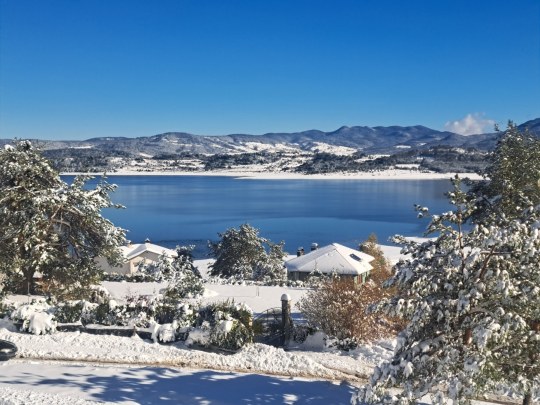
Batak Lake // Balkan // Bulgaria
#Batak#Lake#Batak Lake#bulgaria#bg#bulgara realty#travel#balkan#trip#Nature#Bulgarian#tourism#Travel
6 notes
·
View notes
Text

Batak women waving near Lake Toba, Sumatra, Indonesia
Dutch vintage postcard
#old#postcard#lake#postkaart#lake toba#indonesia#women#vintage#briefkaart#postal#ansichtskarte#ephemera#photography#near#toba#photo#sumatra#postkarte#tarjeta#dutch#batak#historic#sepia#waving#carte postale
7 notes
·
View notes
Photo
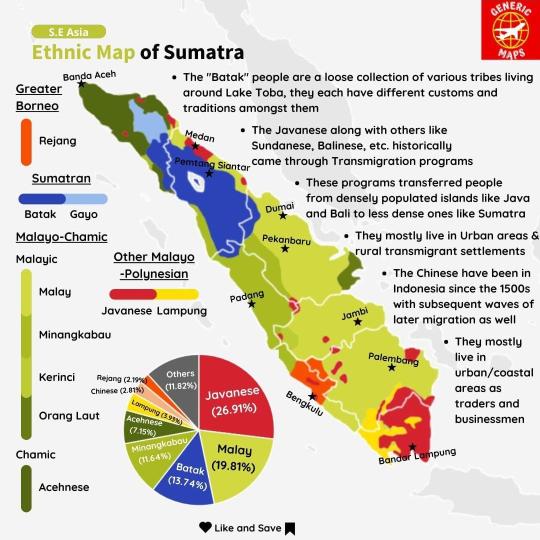
Ethnic Map of Sumatra.
by generic_maps
• The "Batak" people are a loose collection of various tribes living around Lake Toba, they each have different customs and traditions amongst them
• The Javanese along with others like Sundanese, Balinese, etc. historically came through Transmigration programs
• These programs transferred people from densely populated islands like Java and Bali to less dense ones like Sumatra
• They mostly live in Urban areas & rural transmigrant settlements
• The Chinese have been in Indonesia since the 1500s with subsequent waves of later migration as well
• They mostly live in urban/coastal areas as traders and businessmen
85 notes
·
View notes
Text
"Palawan Paradise: Discovering the Enchanting Beauty of the Philippines"

Nestled in the westernmost part of the Philippines, Palawan stands as a true gem in the world of travel. Often hailed as the "Last Frontier," Palawan is a haven of pristine beauty that beckons adventurers, nature enthusiasts, and wanderers alike. This enchanting province is renowned for its breathtaking landscapes, crystal-clear waters, and a rich tapestry of biodiversity. Let's embark on a virtual journey to uncover the mesmerizing beauty of Palawan.
1. Palawan's Natural Wonders: Palawan boasts an incredible array of natural wonders that will leave you awestruck. The crown jewel of this island paradise is undoubtedly El Nido. Imagine towering limestone cliffs, hidden lagoons, and emerald waters teeming with marine life. El Nido's Bacuit Archipelago is a playground for kayakers, snorkelers, and beachcombers. But the magic of Palawan doesn't stop there. The Puerto Princesa Subterranean River National Park, a UNESCO World Heritage Site, takes you on an underground river journey through stunning caves adorned with ancient stalactites and stalagmites.
2. Island Hopping Adventures: Island hopping is a quintessential Palawan experience. Coron, another breathtaking destination in Palawan, is home to enchanting lakes, hot springs, and a world-renowned dive site. Explore sunken Japanese warships from World War II in the crystal-clear waters of Coron Bay. If you seek tranquility, make your way to Balabac, an emerging paradise in the southern part of Palawan, where you'll find remote islands with powdery white sand beaches and vibrant coral reefs.
3. Culinary Delights: Palawan not only captivates with its natural beauty but also with its culinary treasures. Savor the flavors of Palawan with fresh seafood delicacies like "kinilaw" (ceviche) and "tamilok" (woodworms), if you dare. The local markets offer a glimpse into the island's gastronomic culture, where you can try exotic fruits and unique dishes influenced by various ethnic groups.
4. Cultural Encounters: Palawan's rich cultural heritage is as captivating as its landscapes. Indigenous communities like the Tagbanua and Batak people call Palawan home and are known for their vibrant traditions. Immerse yourself in their culture by visiting their villages, where you can witness traditional dances, craftsmanship, and learn about their sustainable way of life.
Palawan is more than just an island; it's a world of wonder waiting to be explored. From its natural marvels like El Nido and Coron to its delectable cuisine and cultural diversity, Palawan offers an experience that lingers in your heart long after you've left its shores. Whether you're an adventurer, a beach lover, a culture enthusiast, or simply someone in search of serenity, Palawan promises an unforgettable journey into the heart of paradise. Don't miss the opportunity to embark on a once-in-a-lifetime adventure in this enchanting corner of the Philippines.
2 notes
·
View notes
Text
Lakbay Sanaysay
PUERTO PRINCESA
PALAWAN
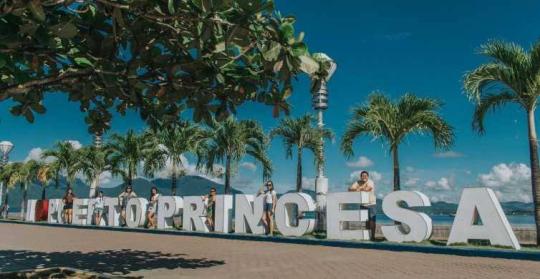
Ito Yung Lugar na gusto kong puntahan balang araw, Ang Lugar Ng Puerto princesa sa palawan. Kilala ito bilang "GREEN CITY IN THE PHILIPPINES" na makikita sa Isla ng PALAWAN. Ito ay natagpuan noon 1872 at nai-deklarang lungsod noong Hunyo 21 1961. Mayroon itong populasyon na 22,673 ka tao kaya ang lungsod na ito ang idineklara na may pinaka onting populasyon sa buong pilipinas. Kahit kaunti lang ang tao dito, ito parin ang pangalawa sa pinaka malaking lungsod na kasunod sa Davao. Mayroon itong laking 2381.02 square kilometers.


Yan naman Si Lucilo R. Bayron isang mayor ng Puerto princesa at Maria Nancy A. Socrates bilang isang vice Mayor. Sa Puerto Princesa ang kanilang kultura ay malalim at mayaman. Ito ay nagtataglay ng mga elemento mula sa mga katutubong tribu na naninirahan sa lalawigan tulad ng mga Batak, Tagbanua, at Palaw'an. Ang mga ito ay ng kanilang mga tradisyon, wika, sining, musika, sayaw, at paniniwala. Bukod sa mga katutubong tribu, ang Puerto Princesa ay may iba't ibang impluwensiya mula sa iba't ibang lugar sa Pilipinas at pati na Ito ay naging tahanan para sa mga migrante mula sa iba't ibang bahagi ng Pilipinas, na nagdala ng kanilang sariling kultura at tradisyon.

Ilan sa mga tradisyon ng Puerto Princesa ay ang Kagueban (Feast of the Forest).Tuwing buwan ng Hunyo, ito ay isang pagdiriwang na naglalayong ipakita ang kahalagahan ng pagsugpo sa illegal logging at pangangalaga sa kalikasan. Mayroon din silang tradisyunal na sayaw tulad ng Kuratsa, Subli, at Kudang. Isang sikat na tradisyon din ang Palawan's Kasadyaan Festival, kung saan ipinapakita ang kagandahan at yaman ng kultura ng Puerto Princesa.

Isa din sa pagdidiriwang sa Puerto princesa ang "Kaamulan Festival". Ito ang pinakamalaking pagdiriwang sa Puerto Princesa, na ginaganap tuwing ikatlong linggo ng Pebrero. Ito ay isang buong lungsod na nagpapakita ng kanilang kultura at tradisyon. Sa Puerto princesa hindi rin maiiwasan nito ang tropical na klima. Ito ay maalinsangan at mainit sa panahon ng tag-araw, at may mga pag-ulan at mga bagyo sa mga buwan ng tag-ulan. Ang mga gastusin naman sa Puerto Princesa ay maaaring magkakaiba depende sa plano ng bawat Isa katulad ng:
Accommodation
ang mga presyo ng mga hotel o mga accommodation sa Puerto Princesa ay maaaring magkakaiba depende sa uri ng accomodation na gusto ninyo.
Pagkain
Ang mga restawran sa Puerto Princesa ay nag-aalok ng iba't ibang uri ng pagkain mula sa lokal hanggang sa internasyonal. Ang gastusin sa pagkain ay maaaring magkakaiba depende sa inyong gusto at budget.
Transportasyon: Ang Puerto Princesa ay mayroong mga tricycle at jeepney bilang pangunahing paraan ng transportasyon sa loob ng syudad. Ang gastusin sa transportasyon ay maaaring magkakaiba depende sa mga lugar na pupuntahan ninyo at sain ninyo.
Tours at Activities
Ang mga tour packages at activities sa Puerto Princesa ay nag-aalok ng mga aktibidad tulad ng city tour, underground river tour, island hopping, at mga adventure activities. Meron ding lokal na crafts, keychains, t-shirts, at iba pa. Ang gastusin sa mga souvenir at pasalubong ay maaaring magkakaiba depende sa mga bibilhin ninyo at sa inyong budget. Kaya gusto Kong pumunta sa Puerto princesa para maranasan ko Rin Ang buhay nila Doon at mga tanawin na magaganda.
.
.
0 notes
Text
BATAKS – “THE MAN-EATERS”?
Source: Art of Anchestors & Phinemo.com
Known as the largest ethnic group in Indonesia, Batak is divided into several sub ethnics namely Toba (the largest Batak sub-ethnic), Mandailing, Angkola, Pakpak/ Dairi, Simalungun, and Karo. At the end of the 21st century, the Bataks numbered about 6.1 million, and a majority of the population used to live around Lake Toba, North Sumatra highlands. The traditional occupation of Bataks was mostly farming, hunting, and agriculture. However, throughout history, Bataks have filled with a wide range of new modern occupations such as mechanics, engineers, musicians, journalists, attorneys, scientists, and many more. More points, Bataks have been well-known take part in the field of law, as lawyers and attorneys have excellent reputations by handling high-profile cases in both Indonesia and other countries.
In the 13th century, the first known Westerner attempted to visit Batak territory, Marco Polo, but was denied entry into the lands. Rumors said Marco Polo described Bataks as cannibalistic by eating the entire corpse of other people, including their grandparents. This controversial news has alarmed the Europeans and framed the Bataks as the man-eaters.


According to Bataks’ belief, relatives who are terminally ill and incurable must be killed and eaten entirely without any body parts left, as the rotten corpse will bring misery and great sins which may affect the whole communities and surroundings.
In 1421, an Italian merchant, traveler, and writer, Nicollò de’ Conti came to Sumatra to undertake a trade mission in Southeast Asia. He wrote Bataech (Bataks) enjoyed wars and ate away the defeated enemies. It is believed that eating enemies’ corpses resulted in a stronger soul and body. As written by Nicollò de’ Conti, the cannibalism ritual is held in Huta Siallagan, a small village in Samosir Island. There can be seen eight Bolon houses with diverse functions, and the most horrendous thing is the existence of the table and chairs known as The Trial Stone (The Judgement Place). The perpetrators who are found guilty will be sentenced to death and the execution will be held in this table, - decapitation and the heart will be cooked and served to the king.

By the 1890, when the Dutch colonialism had occupied Sumatra, this cannibalism ritual had been banned. Expert says, most likely due to the influence of Christianity from the Europeans.
#history#story#culture#batak#bataktoba#toba#tribe#ethnic#dutch#cannibalistic#judgement#europeans#sejarah#sejarahbatak#kanibal#orangbatak#samosir
1 note
·
View note
Text

•A Glimpse of the Past•
City of Puerto Princesa, the Capital and a highly urbanize city of the the main land of Palawan.We all know that Province of Palawan and the City of Puerto Princesa are the most Beautiful Tourist Spot and one of the Historical places in the Philippines.
In Puerto Princesa City, THE PUERTO PRINCESA SUBTERRANEAN RIVER was known and reputed to be the World's Longest Underground River in 2007, with the length of six (6) kilometers from the sea.The park is located at the SAINT PAUL MOUNTAINon the western coast of the Island of Palawan and about to 80 kilometers north of the Puerto Princesa City.It was listed as a UNESCO WORLD HERITAGE SITE in 1999 and voted as #1 NEW SEVEN (7) WONDERS OF NATURE on November 11, 2011.
Puerto Princesa Subterranean River National Park encompasses one of the World's most impressive cave systems, featuring spectacular limestone and a karst landscape, pristine natural beauty and intact old growth forests and distinctive wildlife. The area is comprising of approximately 22,202 hectares and a total lenght of 8.2 kilometers long underground river.
Subterranean River or Underground River highlights is the river system that it flows directly into the sea, with its brackish lower subjected to a tidal influence distinguishing it as a significant natural phenomenon.
Inside the underground river, you can sea a thousands species of bats the living inside a cave and a lots of beautiful landscapes of a karst or limestone inside a cave that aged for about million years ago.
Long time ago, a group of a Tribe named BATAK TRIBE that originated here in the nothern part of the mainland of Palawan and Puerto Princesa City, they discovered the cave of underground river or the Subterranean River, but the group of Batak tribe are very scared to enter the said cave because of their belief. They named the cave as a DEVILS PLACE or DEVILS CAVE. They beliefs that a lots of bad spirits are living inside the cave so that the're are very scared to enter the cave because they believe that once you entered the cave, you cannot go back anymore, so that, they lived the place and the cave enchanted.
In 1898, American Zoologist named Dean C. Worcester was touring the island of Palawan, described and quoted if accounts are to be believed, of a lake opening to the sea. In March 1971p,the underground river formerly known as a St. Paul Subterranean National Park was established as a tourist destination.On November 1999, a proclamation signed for expanding the area of 3,901 hectares to 22,202 hectares and was renamed Puerto Princesa Subterranean River National Park.Until now, a lots of local and international tourist are visited and continue patronizing the Puerto Princesa Subterranean River National Park.
1 note
·
View note
Text
Tomok and Simanindo: The Traditional Batak Villages in Lake Toba
The Batak ethnic group inhabiting the intererior of North Sumatra is devided into six sub-groups. They are the Toba, Karo, Pakpak, Simalungun, Angkola and Mandailing Batak. While two subgroups have converted to Islam, the others have mostly converted to Christianity, primarily through efforts of the German missionary.
Nonetheless, ancient beliefs and traditions, customs and rituals still persist and are adhered to until this very day even by communities who have moved out and resettled in many parts of the Indonesian archipelago.
Most striking when visiting Lake Toba are the Toba villages and their interesting traditional houses, where best examples are at Tomok and Simanindo on the island of Samosir. With modernization, however, hardly any new traditional houses are built, making it, therefore, a special opportunity to visit these before they are completely abandoned and fall in disrepair.
To protect the village from outside raids, barriers of earthen ramparts are built surrounding the village, with bamboo fencing and trees.
The Batak Toba village itself, such as the village of Tomok, consists of a row of separate massive wooden houses with striking saddle-shaped thatch roofs made of sugar palm fibre (called ijuk), although many roofs have now been replaced by the more durable but unromantic corrugated sheets. Houses are raised and supported on large piles of one to two meters height, meant to avoid floods and wild beasts. The houses at Tomok stand with their backs to the lake.
On Samosir Island, the Toba Batak traditional house is called “jabu” or “rumah bolon”. While, opposite each house, across an open paved area are corresponding rice barns, called “sopo”, which are almost equal in size as the house itself, where rice used to be stored, but can also serve as extra dormitory. The paved village area between them is the “alaman” where village ceremonies take place or rice is spread out to dry.
The largest and most prominent house is the communal meeting hall called the “bale” and that of the chief, distinguished by the intricrate decorative floral and foliage drawings in red, white and black on its gable. The three colors represent the 3 spheres of the cosmos, namely red symbolizing the human world, white, made of chalk, for the good spirits, and black made of charcoal, representing the underworld.
An excellent example is the chieftain’s house of Raja Sidauruk at Simanindo , now a museum, where the sigalegale puppet performances are held.
Many houses on Toba are also decorated with symbolic carvings of breasts and geckos (called cicak). The breasts are for fertility and the geckos are for protection of the house, while at the top gable is invariably placed the head of a water buffalo, denoting prosperity for the inhabitants.
The Batak Toba house has, therefore, three distinct zones. The lower zone beneath the house among the piles is a working area and often used as a pen for animals. The floor area, the zone above this, is the actual home of the extended family, accessed by a ladder or stairs. The interior of the house has no division and is therefore one long, dimly lit hall. At night, cloths are drawn down to separate the sleeping areas between each family.
While the highest storey or the attic is the most important part of the building where family heirlooms and ancestral shrines are placed.
A house used to be inhabited by between four to six families, but nowadays sometimes only one family lives in one house.
To observe and study the varied architectural designs and construction of houses belonging to Batak clans, visit the TB Silalahi Center and Batak museum in the town of Balige located on the southernmost shore of Lake Toba.
Text source : https://www.indonesia.travel/sa/en/news/tomok-and-simanindo-the-traditional-batak-villages-in-lake-toba



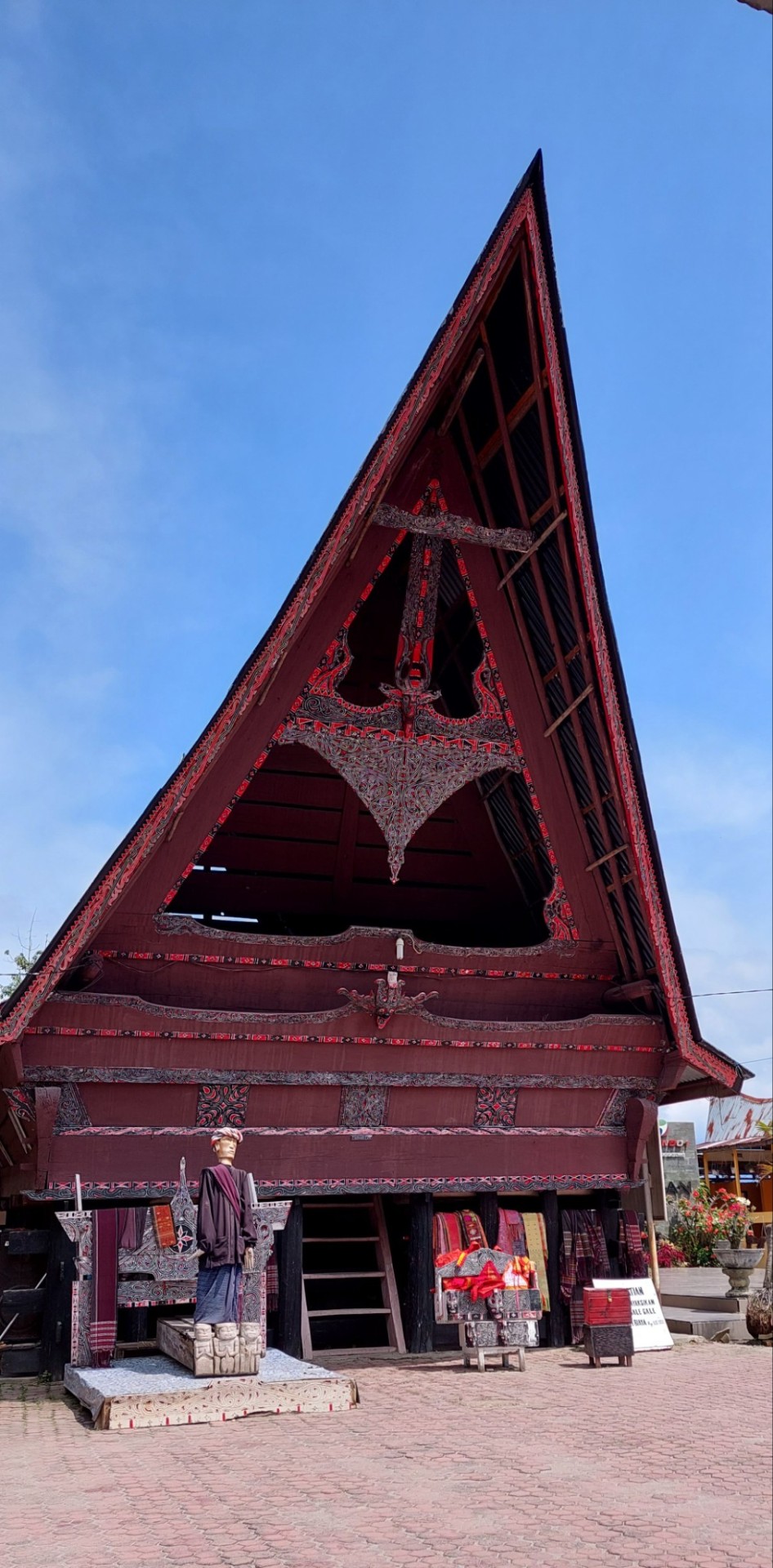

0 notes
Photo



Indonesia | 2016
Samosir, North Sumatra
Batak style architecture.
————————————————————————
© yokecyansim
#indonesia#north sumatra#samosir#lake toba#samosir island#2016#june 2016#photographers on tumblr#original photography#batak#batak style#travel#asia#imiging#camera-raw#lensblr
61 notes
·
View notes
Text
youtube
6 notes
·
View notes
Photo

Samosir Island - 2 by maringantobing1489
2 notes
·
View notes
Text
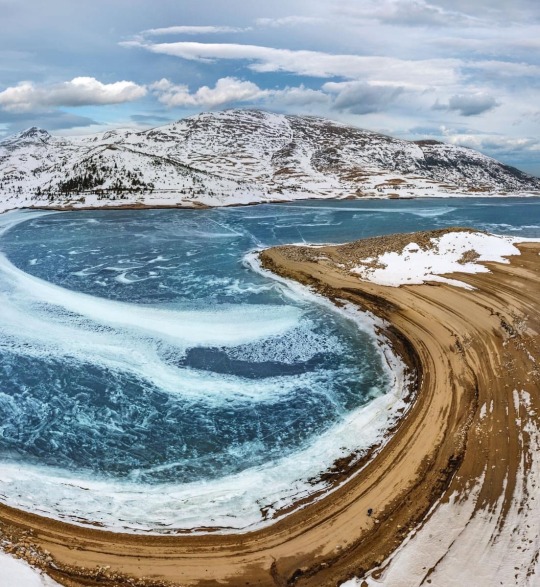
Batak Lake // Winter Time // Bulgaria 🇧🇬
#bulgaria#bg#bulgara realty#trip#travel#balkan#lakes#lake#batak#mountain#mountains#winter#winter time#frozen#ice#ice lake#nature#wildlife#wild nature#tourism
17 notes
·
View notes
Photo

Batak Lake Panorama
#500px#lake#clouds#snow#batak#Nature#Landscape#Animal#Macro#Architecture#Water#Sky#Clouds#Cute#Beaut
1 note
·
View note
Photo

Batak Lake Panorama by lxdlxd
1 note
·
View note
Link
Nearly 130 years ago, Italian explorer Elio Modigliani arrived at a natural history museum in Genoa with a lizard he’d reportedly collected from the forests of Indonesia.
Based on Modigliani’s specimen, the striking lizard — notable for a horn that protrudes from its nose — got its official taxonomic description and name, Harpesaurus modiglianii, in 1933. But no accounts of anyone finding another such lizard were ever recorded, until now.
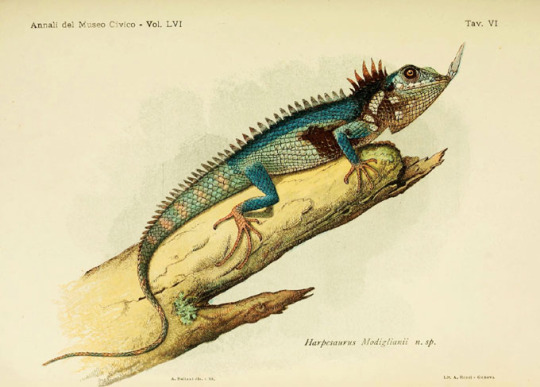
This illustration of Modigliani’s nose-horned lizard was made in 1933 based on the original lizard first found in 1891. That specimen turned pale blue due to how it was preserved.
CREDIT: C.A. PUTRA ET AL/TAPROBANICA: THE JOURNAL OF ASIAN BIODIVERSITY, 2020, ANNALI DEL MUSEO CIVICO DI STORIA NATURALE DI GENOVA 56, PL. VI
In June 2018, Chairunas Adha Putra, an independent wildlife biologist conducting a bird survey in a mountainous region surrounding Lake Toba in Indonesia’s North Sumatra, called herpetologist Thasun Amarasinghe. Near the lake, which fills the caldera of a supervolcano, Putra had found “a dead lizard with interesting morphological features, but he wasn’t sure what it was,” says Amarasinghe, who later asked the biologist to send the specimen to Jakarta.
It took only a look at the lizard’s nose-horn for Amarasinghe to suspect that he was holding Modigliani’s lizard. “It is the only nose-horned lizard species found in North Sumatra,” he says.
Wooden arts and folktales of the Bataks — indigenous people native to the region — show that lizards have a special place in the people’s mythology. “But simply there was no report at all about this species” following Modigliani’s, says Amarasinghe, of the University of Indonesia in Depok.
He asked Putra to get back to the caldera to see if there was a living population. After five days, Putra found what he was looking for one evening, “lying on a low branch, probably sleeping,” according to the biologist. He took pictures of the lizard and measured the size and shape of its body parts, such as the length of its nose-horn and head. He also observed its behavior before finally releasing it the same night.

A Modigliani’s nose-horned lizard is typically bright green and yellow (top), but the reptile turns brownish-orange under stress (bottom).
Credit: C.A. PUTRA ET AL/TAPROBANICA: THE JOURNAL OF ASIAN BIODIVERSITY, 2020
Using this data, Amarasinghe compared the lizard with the one described in 1933, and concluded that the living lizard and the dead one that Putra had stumbled across were in fact Modigliani’s nose-horned lizards. The Genoa museum’s dead specimen is pale blue due to preservation, but it’s now known that the lizard’s natural color is mostly luminous green. Its camouflage and tree-dwelling behavior are similar to African mountain chameleons, Amarasinghe, Putra and colleagues report in the May Taprobanica: The Journal of Asian Biodiversity.
The reptile belongs to the Agamidae family of lizards, which are commonly called dragon lizards and include species such as bearded dragons (SN: 6/14/17). Shai Meiri, a herpetologist at Tel Aviv University, has previously shown that many dragon lizards live in small, hard-to-access areas, making the reptiles difficult to study. There are 30 agamid species that have never been seen since they were first described, and 19 species which are known from just a single specimen, Meiri says.
While thrilled with their find, Amarasinghe and Putra are worried about the lizard’s future. “The living dragon was found outside a conservation area, and massive deforestation is happening nearby,” Amarasinghe says.
But the rediscovery offers a glimmer of hope for the lizard’s conservation, Meiri says. Before the reptile resurfaced, no one knew where exactly Modigliani’s lizard lived, or whether it had already gone extinct, he says. But now, “we can study it, understand its conservation needs and hopefully implement conservation measures.”
2K notes
·
View notes
Photo

Edge Of Horizon by maringantobing1489
2 notes
·
View notes